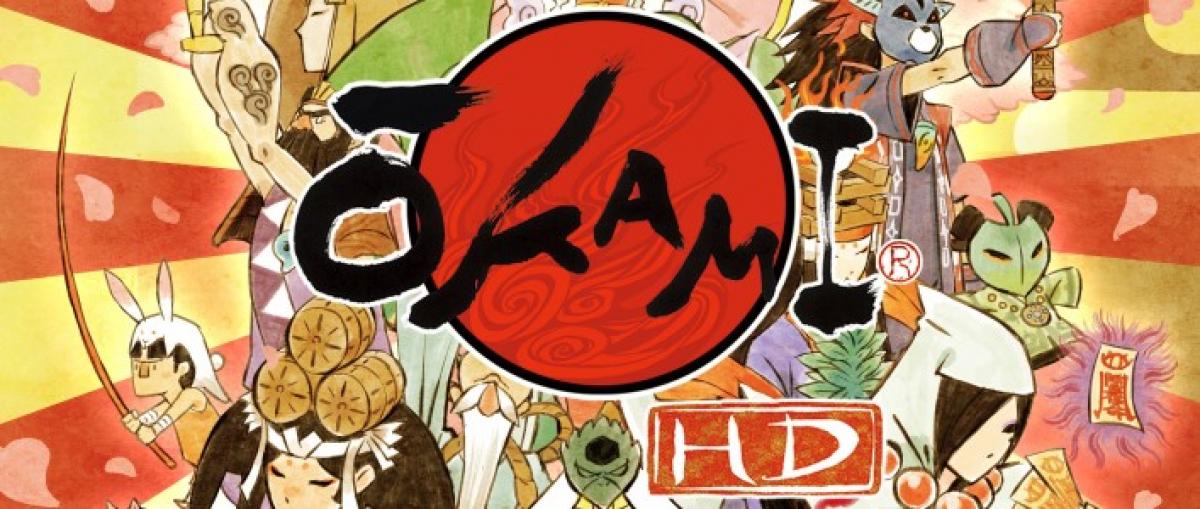

Objects such as trees and grass consist of beautiful, flat paintings carefully placed into each scene. A textured paper effect is applied to the scene lending the game a sense of texture as if it were being drawn before the player. Inky black lines envelop geometric edges across the world bleeding out across the image. Clover Studio pushed its cel-shading techniques to the next level but rather than mimicking the look of a modern anime or manga as was common at the time, the team focused instead on replicating the style of Japanese sumi-e paintings. It's still a great game today but what stands out most is its visual style. It may not have ignited sales charts, but it's widely considered a classic of its era. With an enormous pool of talent and money behind the game, Okami was released to critical acclaim back in 2006. While the studio no longer exists today, the spirit of Clover lives on through Platinum Games - but Okami remains a superb example of this remarkable team's early work. With the talents of Shinji Mikami, Hideki Kamiya, Atsushi Inaba and others behind it, Clover produced some true classics during its short lifespan.

Back in the day, Capcom's Clover Studio was a development group formed by Capcom to develop new IPs and explore new genres. Okami is one of those titles with timeless charm, created by genuine gaming artisans. The visual aesthetic is timeless - it's one of those games that manages to hold up even when viewed through the lens of a modern 4K TV. It's a beautiful adventure and one the firm has seen fit to re-release across three generations of consoles - and it now arrives on Nintendo Switch, boasting new features including touchscreen input and motion control, along with HD visuals in line with the other current-gen ports.Īnd honestly, it works. It's a sprawling open-ended action RPG fusing The Legend of Zelda with ancient Japanese history and at the time of its initial release, it was also one of the most ambitious and expensive games undertaken by publisher Capcom. This is probably a design oversight, since there is no real reason to deny access to the Dragon Palace by the time the Water Tablet is available.Released more than 12 years ago, the original Okami arrived during the PlayStation 2's twilight years. It does not allow Amaterasu to enter the Dragon Palace via the whirlpool: she will simply be pulled in and returned to shore as if she had entered the whirlpool while swimming, with Issun reacting with his normal message.Due to this item's similarities to the Fire Tablet, it is likely for this item to be also constructed by the Moon Tribe.It is never stated if he uses a Water Tablet to achieve this. Waka is shown to have the power to walk on water.If not bought then, the Holy Artifact could be obtained from Marco aboard the Ark of Yamato in the end of Amaterasu's journey, though if acquired then, the item would be useless, because there is no need to cross a body of water at that point in the storyline, except for countering the attack of Orochi 's water head. Also, if Amaterasu equips the Water Tablet while she has been swimming, then she will immediately be pushed to the water's surface when exiting the Fan Menu.Īfter the defeat of Ninetails, the Water Tablet could be purchased from the Emperor for 100 Demon Fangs. This also allows her to move upstream, against the flow of a current that would normally push a lily pad downstream or destroy it completely this ability is needed in finding a certain clover at Agata Forest or acquiring Stray Bead #40. When equipped, the Water Tablet allows Amaterasu to move on the surface of water bodies, therefore enabling her to traverse large distances on water quickly while not drowning. All these traits combined together give the item an appearance similar to that of other Moon Tribe artifacts. The Water Tablet's surface is lined with arcane, perpendicular lines and miniature, illegible inscriptions. The bottom edge of the artifact is cut into 3 grooves of different lengths, seemingly possessing a certain significance to its power. The two vertices at the top of the piece are ground so that each is a smaller angle measured at about 135°, instead of 90° the bottom corners of the tablet are kept as square angles. The Water Tablet is a flat, palm-sized rectangular piece of wood, stone, or metal painted a deep blue color.


 0 kommentar(er)
0 kommentar(er)
